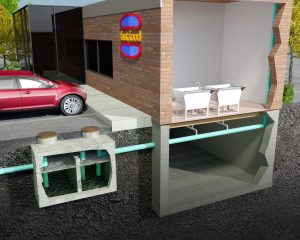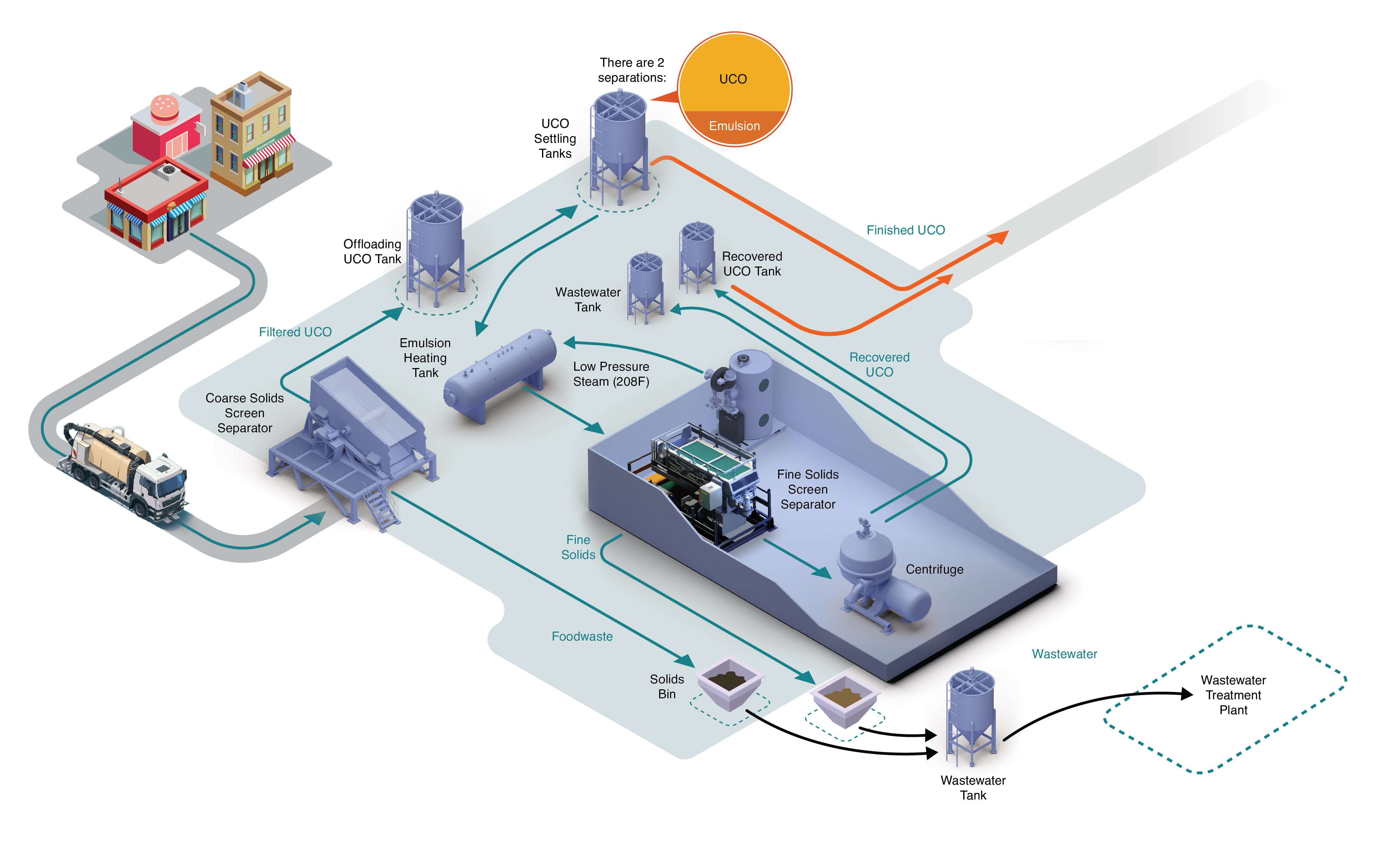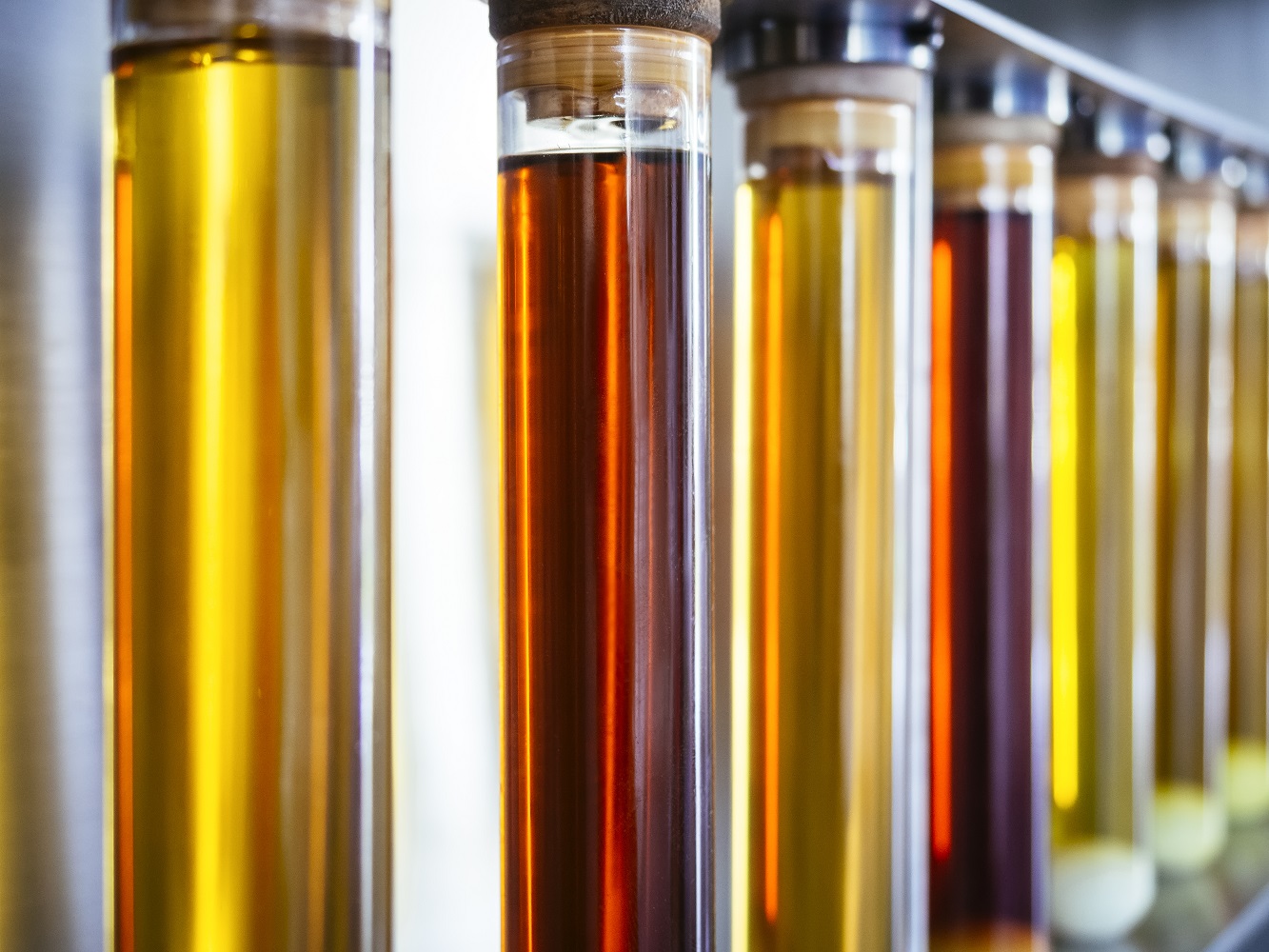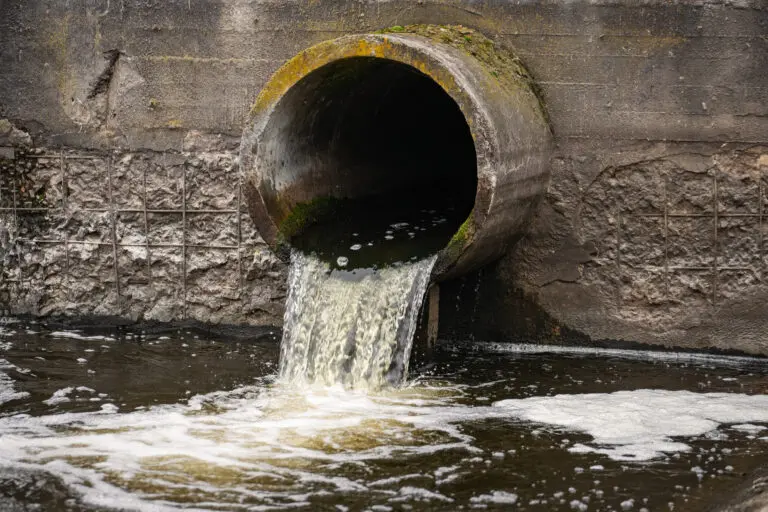The What, Why, and How of Grease Traps
Mahoney Environmental has been recycling used cooking oil for over 65 years and is dedicated to the environment. In addition to recycling, Mahoney offers grease trap installation and maintenance, and provides 24/7 support for both services. As a facilities manager, you have a multitude of tasks that come with operations, and it may not always be easy to balance all the demands. If you’ve ever had a restaurant shut down because the grease trap was backing up into the kitchen or overflowing in the parking lot – then you already know the value of Preventative Maintenance for your Grease Trap and Plumbing. Below we share some best practices beyond routine grease trap maintenance.
The design of a grease trap reminds me of making a pot of homemade chicken soup. You put in a whole chicken, a bunch of vegetables and then let it cook for a few hours. Remove the chicken and let it cool. What you will find is this – The fat from the chicken has floated to the top and solidified. The veggies (solids) will settle on the bottom of the pot, and the broth takes up the space in between. A grease trap works the same way. Food and water go down the drain and into the grease trap – The solids settle to the bottom, the Fats float on top, and in between the waste water drains into the city water supply – capturing the FOG (fats, oil and grease) in your grease trap.
Two Types of Traps
There are two types of grease traps – either Interior or Exterior grease traps. Typically, lower volume restaurants will get by with an interior grease trap. It is often located underneath the 3-compartment sink, and the capacity is about 25-100 gallons. Whether it is recessed into the floor, or located above ground on the floor, be certain that they are properly sealed, the gaskets are in good condition, and that proper bolts and screws are in place. This keeps both the water and the odor inside the trap.
External grease traps are located underground, and range in size, (typically 750-2,000 gallons) and are designed for higher volume, larger restaurants.
How Often Should You Clean Your Trap?
How often should you clean your grease trap? The standard rule is that a grease trap should be maintained at a frequency that will guarantee that your fats, oil, and grease (FOG) do not exceed 25% of the trap’s capacity. A general rule of thumb is that inside grease traps need monthly cleaning and external grease traps must be cleaned at least every 12 weeks. Check with your municipality to confirm their specific requirements.
Your best starting point is to hire a licensed grease trap service provider that has well trained employees. Your provider must ensure that all manifests are properly completed and include the size of the trap, the amount of FOG material removed, and where the trap materials will be disposed. This manifest is not only the store’s proof of compliance, but it also follows the train of the material to make certain that it is disposed of legally – guaranteeing it does not wind up in public waterways.
Keep a Manifest
Many municipalities are really cracking down on restaurants by visiting frequently and demanding proof of service. We recommend that each restaurant maintain a file of their GT manifests for a 36-month period. This way when the city or county inspector stops by, you have your proof of service easily available, and their visit is minimally disruptive. Without the manifest, the city will probably issue a warning.
Proper maintenance of the grease trap must include pumping down all chambers, scraping of the side walls, and inspection of all parts including inlet and outlet T’s for proper function. If one of these T’s should break, be forewarned that per OSHA, the repair demands a crew of three people and will be much more expensive than your standard trap cleaning.
 Proper Drains
Proper Drains
Having proper drain covers and drain baskets with procedures in place for food that it is caught in and around these drains to be placed in the trash will significantly reduce backups from debris entering your plumbing system. You might even consider utilizing drain covers that have locks with unique screw heads that cannot be removed with the tips of your kitchen prep knives. A broken knife tip is a clue that the locking lids may have been pried off the floor by the cleaning crew. Remember, they have nothing to lose, so they just might take this short cut. We’ve seen it. This will force more frequent GT cleaning or even cause backups.
Preventative Program in Place
Another way to avoid needing emergency service (and possible shutting down of your restaurant) is to have a preventative maintenance program that includes annual hydro-jetting of your lines or floor drains from inside the restaurant to the grease trap. Food particles and grease adhere to the outer walls of your plumbing which can slow down water flow, and ultimately case a backup. An annual high-pressure line jetting (up to 4,000 psi) greatly reduces this possibility.
What happens when your grease trap exceeds its capacity? The trap can no longer stop the FOG from going downline into the city and municipality water supply. If this occurs, the location will not only be responsible to clean the grease (that can travel for miles downstream), but may also be subject to fines which will impact your bottom line. Even worse, if the grease trap is not properly maintained, over time it will create a grease build-up in the lines that will result in a back up that may shut down your restaurant.
The crisis does not stop there. When your grease trap backs up into the kitchen, the materials end up on your floor, and leave a bacterial residue which can be transferred by employees simply placing a box on the floor and then picking it up to set on a prep area. This could ultimately be used as a surface for food prep – thus cross contamination occurs.
Best Practice Results
After establishing and implementing the best practices described above, you should be in a strong position to avoid being shut down for not following proper procedures. Bear in mind, that even if you do everything right, you may still encounter a grease back up for a reason as simple as an employee pushing a rag down the drain. Good training and solid leadership will help to avoid this type of disaster. Following these guidelines will help all of your staff be more conscious of the consequences of taking short cuts on procedures. We recommend that all managers take the time to witness a grease trap cleaning start to finish, so they may see first-hand what occurs and what winds up down the drain in the grease trap. Everyone may be surprised.
Lessons Learned
When leadership and employees have a clear understanding of what actions create grease build-ups and back-ups, they are more likely to follow the procedures to avoid them. Working as a team, on a common goal, can help avoid the dreaded restaurant shut-down caused by taking short cuts in procedures that can cause grease backups.



 Call Us Now (800) 892-9392
Call Us Now (800) 892-9392